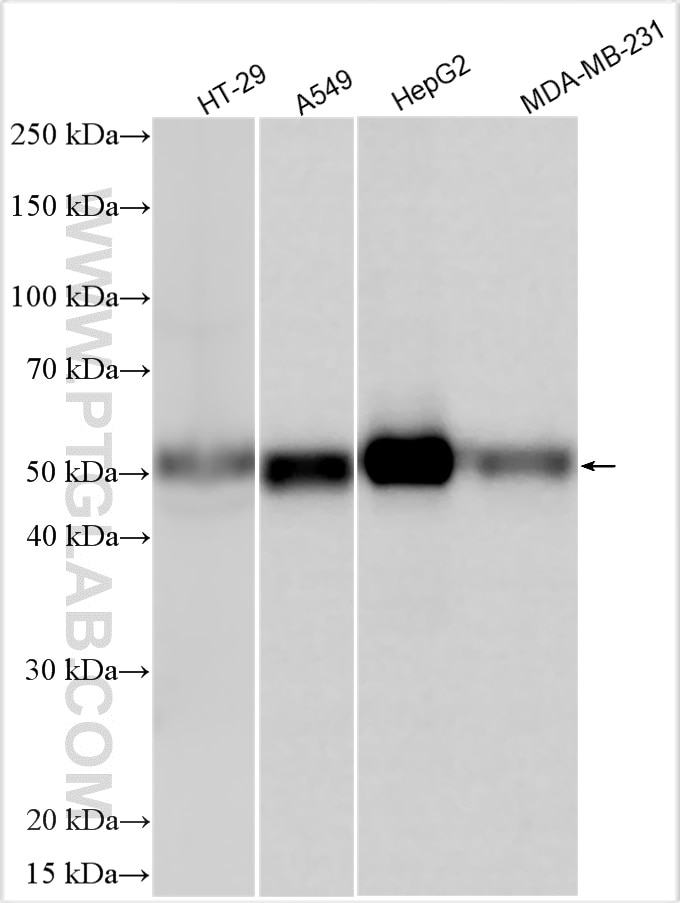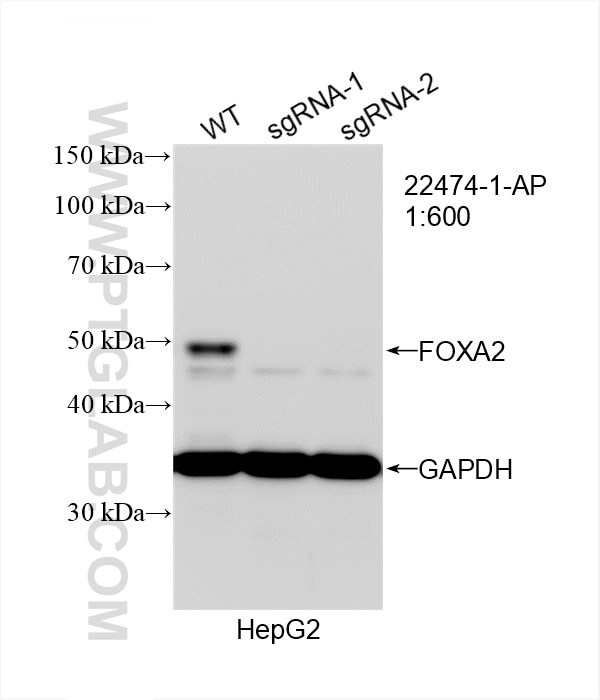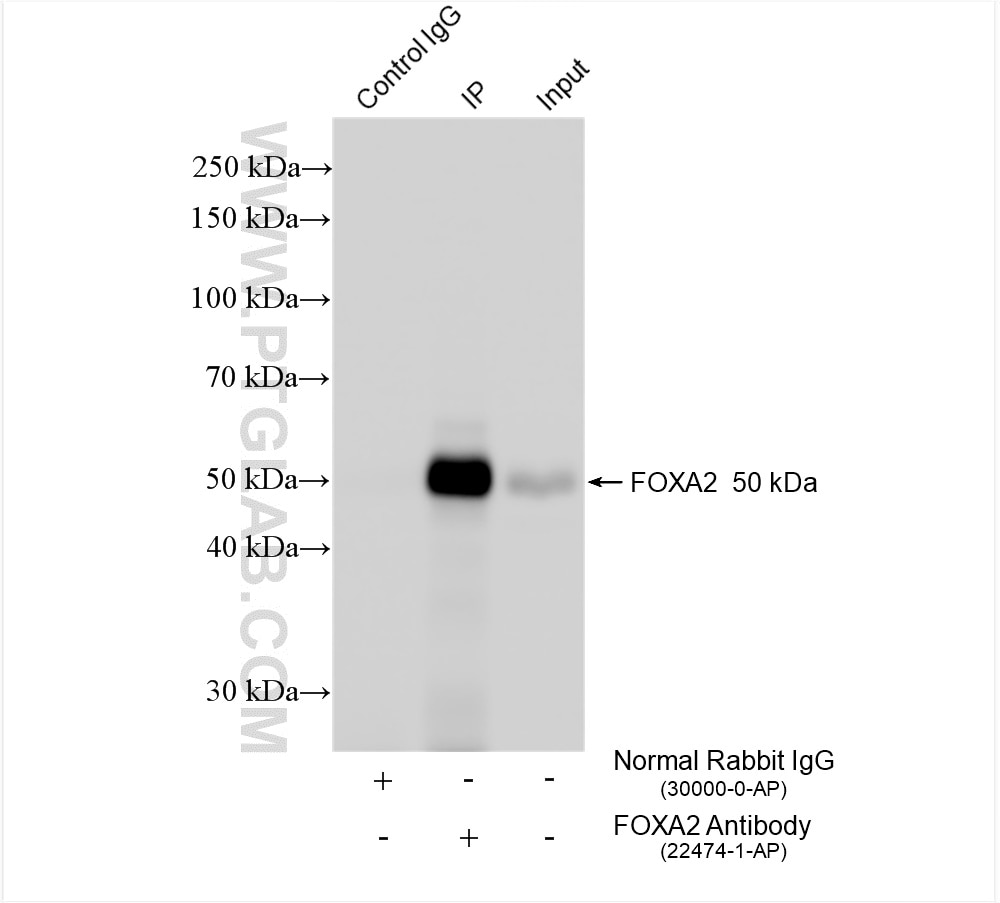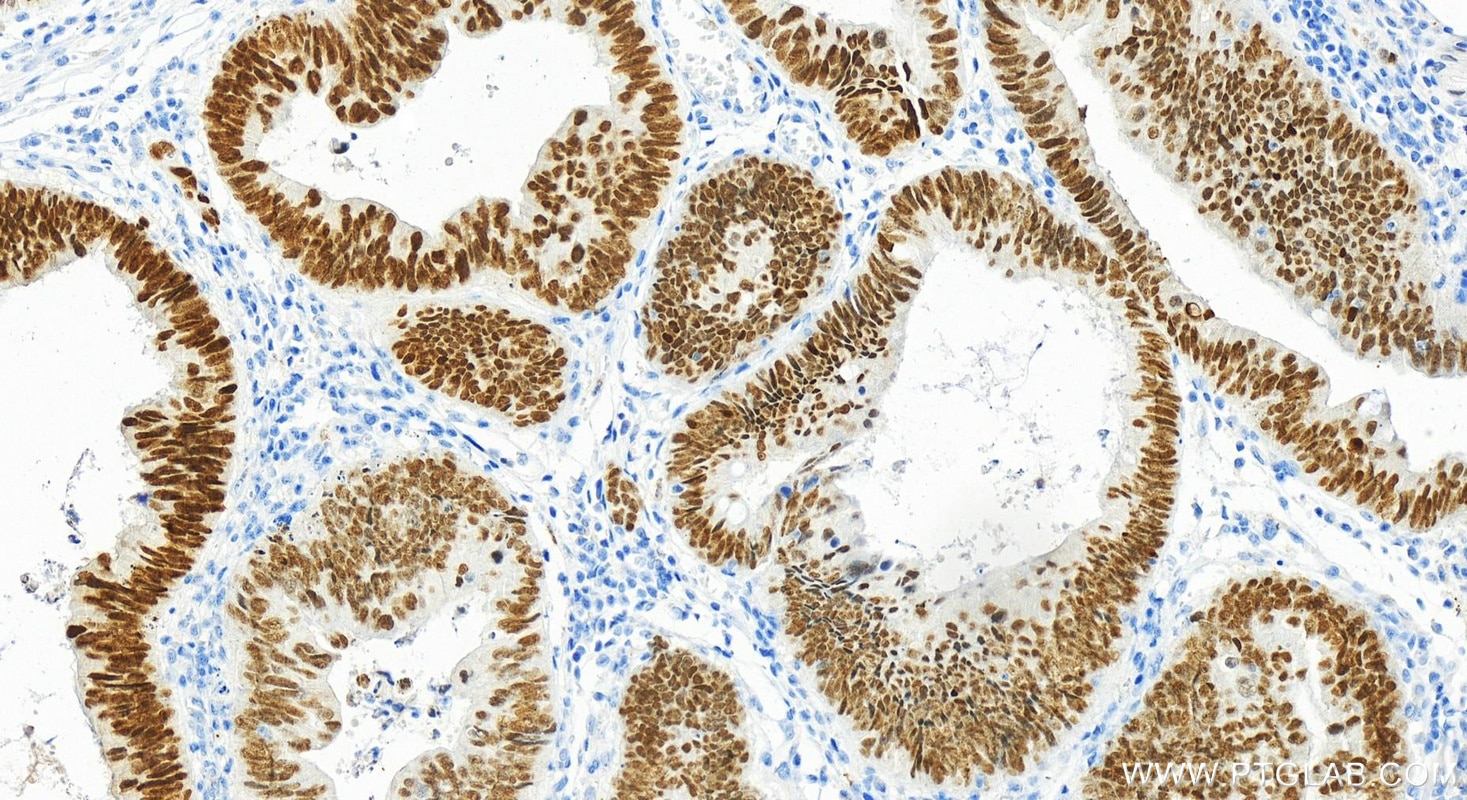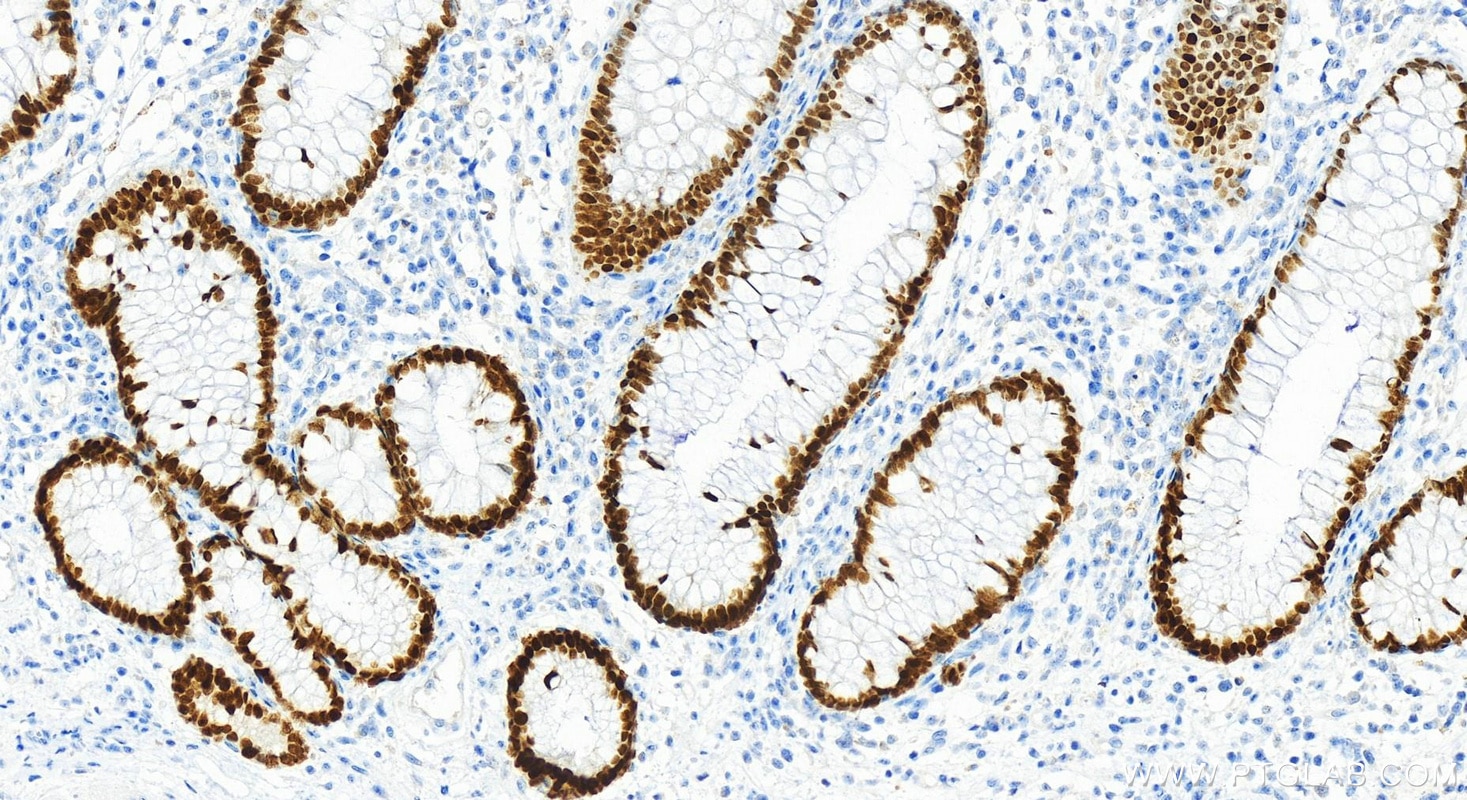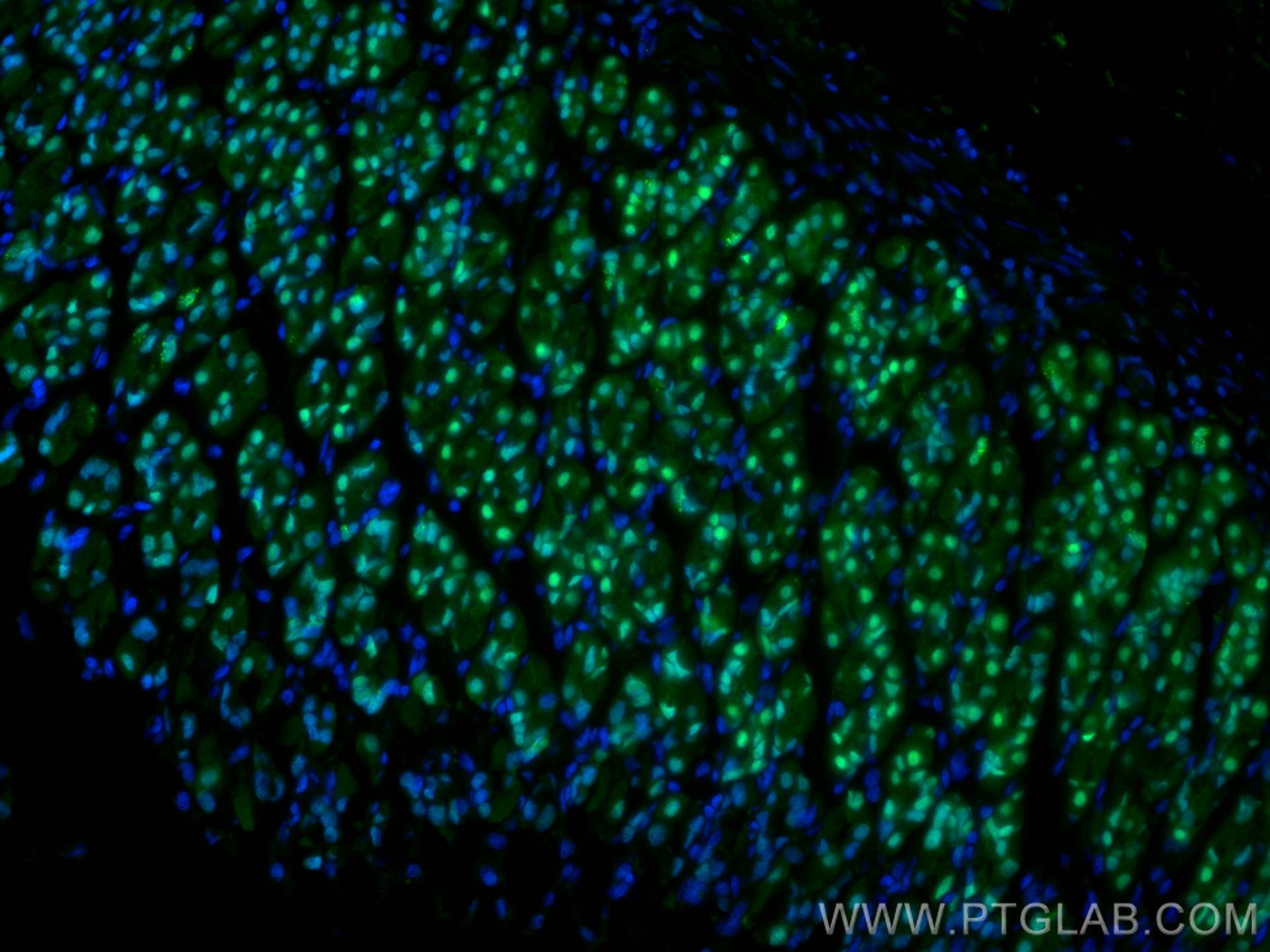Validation Data Gallery
Tested Applications
| Positive WB detected in | HT-29 cells, HepG2 cells, A549 cells, MDA-MB-231 cells |
| Positive IP detected in | HepG2 cells |
| Positive IHC detected in | human colon cancer tissue Note: suggested antigen retrieval with TE buffer pH 9.0; (*) Alternatively, antigen retrieval may be performed with citrate buffer pH 6.0 |
| Positive IF-P detected in | rat stomach tissue |
Recommended dilution
| Application | Dilution |
|---|---|
| Western Blot (WB) | WB : 1:500-1:2000 |
| Immunoprecipitation (IP) | IP : 0.5-4.0 ug for 1.0-3.0 mg of total protein lysate |
| Immunohistochemistry (IHC) | IHC : 1:2000-1:8000 |
| Immunofluorescence (IF)-P | IF-P : 1:50-1:500 |
| It is recommended that this reagent should be titrated in each testing system to obtain optimal results. | |
| Sample-dependent, Check data in validation data gallery. | |
Published Applications
| KD/KO | See 1 publications below |
| WB | See 19 publications below |
| IHC | See 3 publications below |
| IF | See 7 publications below |
| CoIP | See 1 publications below |
| ChIP | See 1 publications below |
Product Information
22474-1-AP targets FOXA2 in WB, IHC, IF-P, IP, CoIP, chIP, ELISA applications and shows reactivity with human samples.
| Tested Reactivity | human |
| Cited Reactivity | human, mouse |
| Host / Isotype | Rabbit / IgG |
| Class | Polyclonal |
| Type | Antibody |
| Immunogen |
CatNo: Ag18221 Product name: Recombinant human FOXA2 protein Source: e coli.-derived, PGEX-4T Tag: GST Domain: 1-160 aa of BC011780 Sequence: MLGAVKMEGHEPSDWSSYYAEPEGYSSVSNMNAGLGMNGMNTYMSMSAAAMGSGSGNMSAGSMNMSSYVGAGMSPSLAGMSPGAGAMAGMGGSAGAAGVAGMGPHLSPSLSPLGGQAAGAMGGLAPYANMNSMSPMYGQAGLSRARDPKTYRRSYTHAKP 相同性解析による交差性が予測される生物種 |
| Full Name | forkhead box A2 |
| Calculated molecular weight | 457 aa, 48 kDa |
| Observed molecular weight | 55-65 kDa |
| GenBank accession number | BC011780 |
| Gene Symbol | FOXA2 |
| Gene ID (NCBI) | 3170 |
| RRID | AB_2879110 |
| Conjugate | Unconjugated |
| Form | |
| Form | Liquid |
| Purification Method | Antigen affinity purification |
| UNIPROT ID | Q9Y261 |
| Storage Buffer | PBS with 0.02% sodium azide and 50% glycerol{{ptg:BufferTemp}}7.3 |
| Storage Conditions | Store at -20°C. Stable for one year after shipment. Aliquoting is unnecessary for -20oC storage. |
Background Information
FOXA2 also named as HNF 3 beta or TCF3B is a 457 amino acid protein, which contains one fork-head DNA-binding domains. FOXA2 can Shuttle between the nucleus and cytoplasm in a CRM1-dependent manner. Phosphorylation on FOXA2 Thr-156 abolishes binding to target promoters and subsequent transcription activation upon INS stimulation. FOXA2 as a transcription factor involves in embryonic development, establishment of tissue-specific gene expression and regulation of gene expression in differentiated tissues. The molecular weight of FOXA2 is 48kDa, but the phosphorylated FOXA2 may be a 55-65kDa protein.
Protocols
| Product Specific Protocols | |
|---|---|
| IF protocol for FOXA2 antibody 22474-1-AP | Download protocol |
| IHC protocol for FOXA2 antibody 22474-1-AP | Download protocol |
| IP protocol for FOXA2 antibody 22474-1-AP | Download protocol |
| WB protocol for FOXA2 antibody 22474-1-AP | Download protocol |
| Standard Protocols | |
|---|---|
| Click here to view our Standard Protocols |
Publications
| Species | Application | Title |
|---|---|---|
Cell Res Tissue-specific transcription reprogramming promotes liver metastasis of colorectal cancer. | ||
iScience NatD epigenetically activates FOXA2 expression to promote breast cancer progression by facilitating MMP14 expression | ||
Chemosphere Comparative cytotoxicity studies of halophenolic disinfection byproducts using human extended pluripotent stem cells. | ||
Am J Cancer Res Epigenetically silenced linc00261 contributes to the metastasis of hepatocellular carcinoma via inducing the deficiency of FOXA2 transcription.
| ||
Int J Biol Sci EGF suppresses the expression of miR-124a in pancreatic β cell lines via ETS2 activation through the MEK and PI3K signaling pathways. | ||
Mol Cell Endocrinol Mof acetyltransferase inhibition ameliorates glucose intolerance and islet dysfunction of type 2 diabetes via targeting pancreatic α-cells. |

